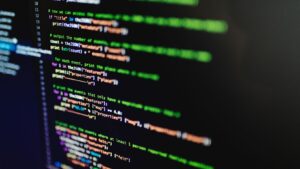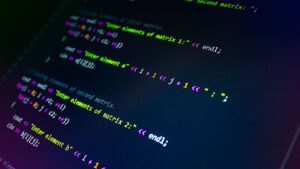 In today’s tech-driven world, programming skills have become essential, and Python stands out as one of the most versatile and beginner-friendly languages. Cisco Networking Academy’s Python Essentials course offers a comprehensive introduction to Python, designed to equip learners with the foundational skills needed for both networking and software development.
In today’s tech-driven world, programming skills have become essential, and Python stands out as one of the most versatile and beginner-friendly languages. Cisco Networking Academy’s Python Essentials course offers a comprehensive introduction to Python, designed to equip learners with the foundational skills needed for both networking and software development.
This course doesn’t just teach the syntax and semantics of Python; it also integrates real-world scenarios, making it ideal for those looking to apply their skills in practical settings. Whether you’re a networking professional aiming to automate tasks or a newcomer to programming, Cisco’s Python Essentials provides a robust starting point.
Cisco Networking Academy Python Essentials
Cisco Networking Academy Python Essentials covers a range of fundamental topics essential for Python programming. The course introduces learners to basic concepts like variables, data types, and control structures. It also delves into more complex elements such as functions, modules, and object-oriented programming.
Students learn how to work efficiently with strings, lists, dictionaries, and other data structures. The curriculum includes practical exercises that reinforce understanding through real-world applications. By the end of the course, users can write Python scripts to automate tasks, manage systems, and analyze data.
Cisco Networking Academy integrates assessments and quizzes to evaluate progress regularly. These tools help ensure that learners grasp critical concepts and can apply them in practical settings. This structured approach makes the Python Essentials course suitable for both beginners and professionals looking to enhance their programming skills.
Course Structure And Content
The Cisco Networking Academy Python Essentials course covers a wide range of topics suitable for both beginners and those seeking to enhance their skills. The course content is divided into organized modules, each focusing on critical aspects of Python programming.
Modules Breakdown
The course consists of four modules:
- Module 1: Introduction to Python and Programming
Students learn Python basics, including syntax, variables, and data types. The module covers how to install Python and set up the environment. Students perform basic coding tasks to familiarize themselves with Python’s core features. - Module 2: Control Structures and Functions
This module delves into control structures like loops and conditionals. Students write programs using if-else statements, while loops, and for loops. Functions are introduced, teaching students to write reusable code blocks. - Module 3: Data Collections and Modules
Learners explore data structures such as lists, tuples, and dictionaries. They learn to manipulate these data collections efficiently. The module also covers modules and libraries, demonstrating how to import and use them in projects. - Module 4: Object-Oriented Programming (OOP)
This advanced module introduces OOP principles. Students learn about classes, objects, inheritance, and polymorphism. Practical exercises involve creating and using classes in real-world scenarios to solidify understanding.
Key Learning Objectives
The course aims to achieve several key learning objectives:
- Foundational Understanding of Python
Ensures that students grasp Python syntax, semantics, and basic programming concepts. They get to handle common data types and structures. - Proficient Use of Control Structures
Enables learners to write complex programs using loops, conditionals, and functions. They practice creating logical and efficientcode through control flow mastery. - Efficient Data Handling
Students gain skills in managing and manipulating data collections. They learn to choose appropriate data structures based on specific problem requirements. - Application of OOP Principles
Prepares students to design and implement programs using object-oriented techniques. They understand the benefits of encapsulation, inheritance, and code reusability in software development.
Each module includes practical exercises and assessments to reinforce and evaluate students’ understanding. This structured approach ensures learners can apply their knowledge effectively in real-world scenarios.
Hands-On Exercises And Projects

Cisco Networking Academy’s Python Essentials course emphasizes practical learning through hands-on exercises and projects that mimic real-world scenarios. This approach ensures learners can apply Python concepts effectively.
Students participate in numerous practical examples that introduce Python basics. Tasks include writing simple scripts, manipulating strings, and performing arithmetic operations. By engaging in these exercises, learners gain confidence in syntax and command usage. More advanced examples involve creating functions to solve specific problems, iterating over data collections, and handling exceptions. These examples provide incremental challenges, reinforcing foundational skills while introducing more complex concepts.



